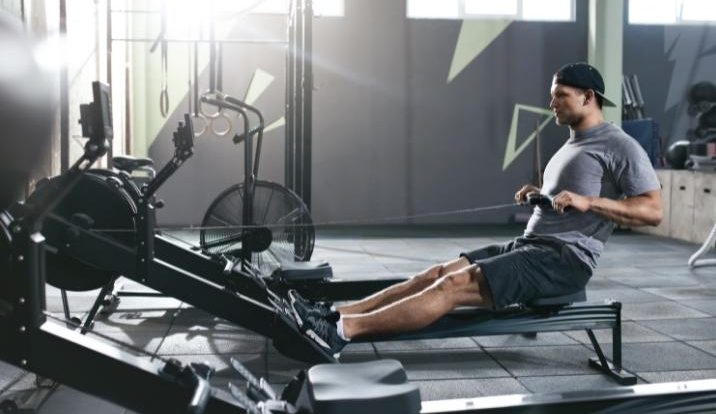
Incorporating cardiovascular activities into your fitness regimen is crucial for maintaining a healthy lifestyle. Engaging in regular cardio sessions can enhance heart function, boost endurance, promote calorie burning, and improve overall well-being. With a plethora of cardio equipment choices available, selecting the ideal option for your requirements can be daunting. This in-depth guide will delve into the different types of cardio equipment, their advantages, and how to pick the most suitable choice to meet your fitness objectives.
Various Cardio Equipment Options
Cardio equipment comes in a multitude of forms, each with distinct advantages and catering to diverse preferences. Here are several popular choices:
Treadmill
Function: Motorized belt for walking, jogging, or running.
Advantages: Provides a familiar and instinctive movement, adjustable speed and incline, and the capacity to monitor performance indicators (e.g., time, distance, and calories burned).
Considerations: May be harsh on joints for certain individuals, particularly at increased speeds or inclines.
Elliptical
Function: Emulates a low-impact fusion of walking, running, and stair-stepping.
Advantages: Delivers a full-body workout with upper and lower body engagement, decreased joint impact, and customizable resistance levels.
Considerations: Might feel less instinctive for some users compared to walking or running.
Stationary Bike
Function: Stationary cycling with choices for upright or recumbent designs.
Advantages: Provides a low-impact exercise, adjustable resistance levels, and the capacity to monitor performance indicators.
Considerations: Mainly focuses on the lower body, with minimal upper body engagement.
Rowing Machine
Function: Emulates rowing a boat, incorporating both upper and lower body.
Advantages: Offers a full-body, low-impact workout, with adjustable resistance levels and the ability to monitor performance indicators.
Considerations: May require a more significant learning curve for proper technique compared to other equipment.
Stair Climber
Function: Imitates stair-climbing actions, targeting the lower body.
Advantages: Focuses on the lower body, specifically the glutes, quads, and calves, with customizable resistance levels.
Considerations: Limited upper body engagement and might feel monotonous for some users.
Factors to Assess When Selecting Cardio Equipment
Keep the following aspects in mind when choosing the most suitable cardio equipment for your requirements:
Fitness Objectives
Determine your primary goals, such as shedding pounds, enhancing endurance, or boosting cardiovascular health. Pick equipment that corresponds with these objectives and activates your desired muscle groups.
Joint Impact
Take into account your body’s limitations and any pre-existing conditions. If joint issues or concerns are present, consider low-impact equipment like ellipticals or recumbent bikes.
Space
Examine the available space in your residence or gym and select equipment that fits comfortably without jeopardizing safety or functionality.
Budget
Cardio equipment prices can vary significantly, so establish your budget and choose an option that offers the greatest value for your investment.
User Experience
Try out different equipment to gauge comfort, ease of use, and personal preference. This will help ensure long-term commitment to your cardio regimen.
Guidelines for Safe and Effective Cardio Equipment Use
To optimize your workouts and minimize injury risk, adhere to the following recommendations when using cardio equipment:
Proper Technique
Master the correct method for each piece of equipment to ensure optimal muscle activation and reduce joint stress.
Warm-up and Cool-down: Initiate each workout with a 5-10 minute warm-up and conclude with a cool-down of similar duration to gently increase and decrease your heart rate.
Variety
Incorporate a range of equipment or exercises into your routine to stave off boredom and encourage a well-rounded fitness program. This can also help diminish the risk of overuse injuries and progress stagnation.
Progression.
Incorporating cardiovascular activities into your fitness regimen is crucial for maintaining a healthy lifestyle. Engaging in regular cardio sessions can enhance heart function, boost endurance, promote calorie burning, and improve overall well-being. With a plethora of cardio equipment choices available, selecting the ideal option for your requirements can be daunting. This in-depth guide will delve into the different types of cardio equipment, their advantages, and how to pick the most suitable choice to meet your fitness objectives.
Various Cardio Equipment Options
Cardio equipment comes in a multitude of forms, each with distinct advantages and catering to diverse preferences. Here are several popular choices:
Treadmill
Function: Motorized belt for walking, jogging, or running.
Advantages: Provides a familiar and instinctive movement, adjustable speed and incline, and the capacity to monitor performance indicators (e.g., time, distance, and calories burned).
Considerations: May be harsh on joints for certain individuals, particularly at increased speeds or inclines.
Elliptical
Function: Emulates a low-impact fusion of walking, running, and stair-stepping.
Advantages: Delivers a full-body workout with upper and lower body engagement, decreased joint impact, and customizable resistance levels.
Considerations: Might feel less instinctive for some users compared to walking or running.
Stationary Bike
Function: Stationary cycling with choices for upright or recumbent designs.
Advantages: Provides a low-impact exercise, adjustable resistance levels, and the capacity to monitor performance indicators.
Considerations: Mainly focuses on the lower body, with minimal upper body engagement.
Rowing Machine
Function: Emulates rowing a boat, incorporating both upper and lower body.
Advantages: Offers a full-body, low-impact workout, with adjustable resistance levels and the ability to monitor performance indicators.
Considerations: May require a more significant learning curve for proper technique compared to other equipment.
Stair Climber
Function: Imitates stair-climbing actions, targeting the lower body.
Advantages: Focuses on the lower body, specifically the glutes, quads, and calves, with customizable resistance levels.
Considerations: Limited upper body engagement and might feel monotonous for some users.
Factors to Assess When Selecting Cardio Equipment
Keep the following aspects in mind when choosing the most suitable cardio equipment for your requirements:
Fitness Objectives
Determine your primary goals, such as shedding pounds, enhancing endurance, or boosting cardiovascular health. Pick equipment that corresponds with these objectives and activates your desired muscle groups.
Joint Impact
Take into account your body’s limitations and any pre-existing conditions. If joint issues or concerns are present, consider low-impact equipment like ellipticals or recumbent bikes.
Space
Examine the available space in your residence or gym and select equipment that fits comfortably without jeopardizing safety or functionality.
Budget
Cardio equipment prices can vary significantly, so establish your budget and choose an option that offers the greatest value for your investment.
User Experience
Try out different equipment to gauge comfort, ease of use, and personal preference. This will help ensure long-term commitment to your cardio regimen.
Guidelines for Safe and Effective Cardio Equipment Use
To optimize your workouts and minimize injury risk, adhere to the following recommendations when using cardio equipment:
Proper Technique
Master the correct method for each piece of equipment to ensure optimal muscle activation and reduce joint stress.
Warm-up and Cool-down: Initiate each workout with a 5-10 minute warm-up and conclude with a cool-down of similar duration to gently increase and decrease your heart rate.
Variety
Incorporate a range of equipment or exercises into your routine to stave off boredom and encourage a well-rounded fitness program. This can also help diminish the risk of overuse injuries and progress stagnation.
Progression
Incorporating cardiovascular activities into your fitness regimen is crucial for maintaining a healthy lifestyle. Engaging in regular cardio sessions can enhance heart function, boost endurance, promote calorie burning, and improve overall well-being. With a plethora of cardio equipment choices available, selecting the ideal option for your requirements can be daunting. This in-depth guide will delve into the different types of cardio equipment, their advantages, and how to pick the most suitable choice to meet your fitness objectives.
Various Cardio Equipment Options
Cardio equipment comes in a multitude of forms, each with distinct advantages and catering to diverse preferences. Here are several popular choices:
Treadmill
Function: Motorized belt for walking, jogging, or running.
Advantages: Provides a familiar and instinctive movement, adjustable speed and incline, and the capacity to monitor performance indicators (e.g., time, distance, and calories burned).
Considerations: May be harsh on joints for certain individuals, particularly at increased speeds or inclines






